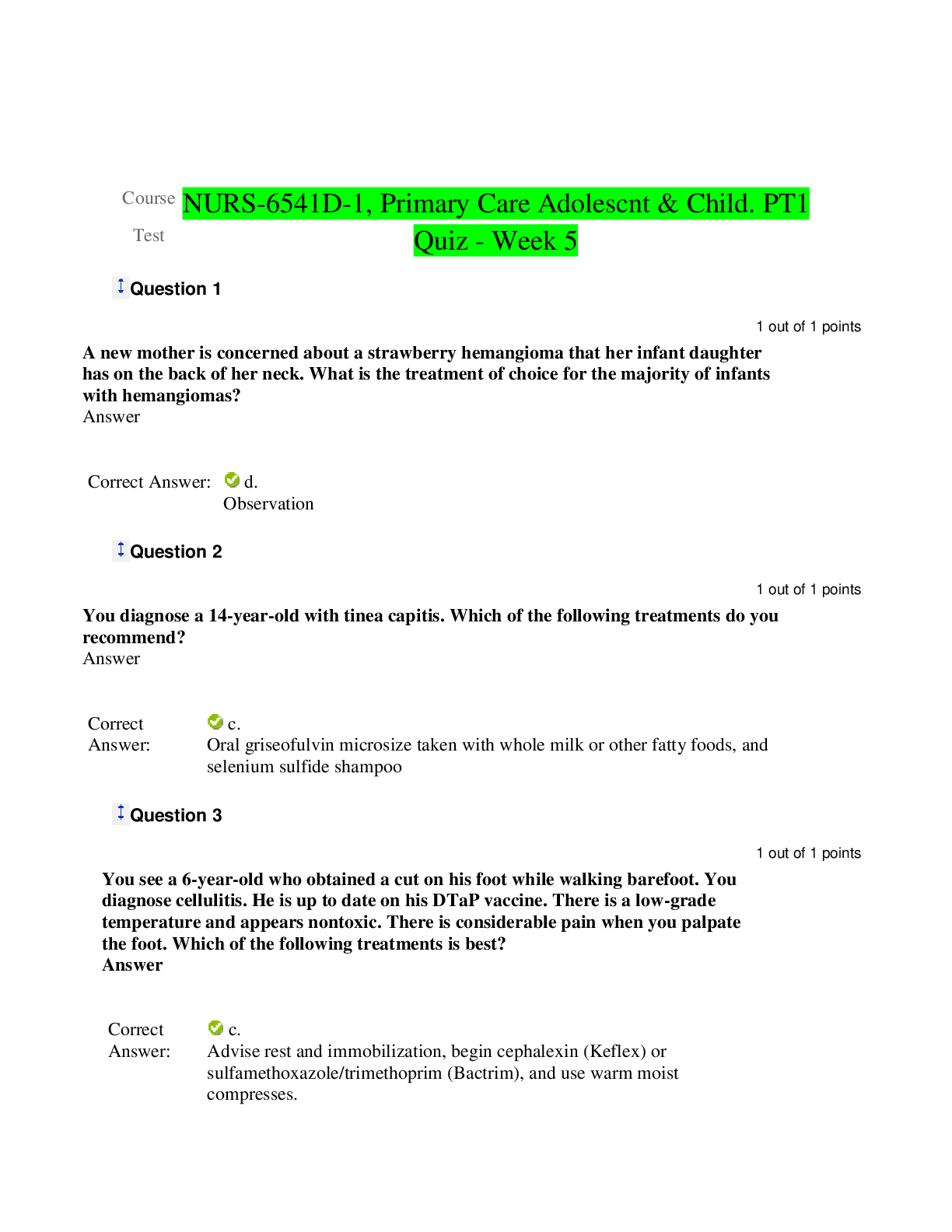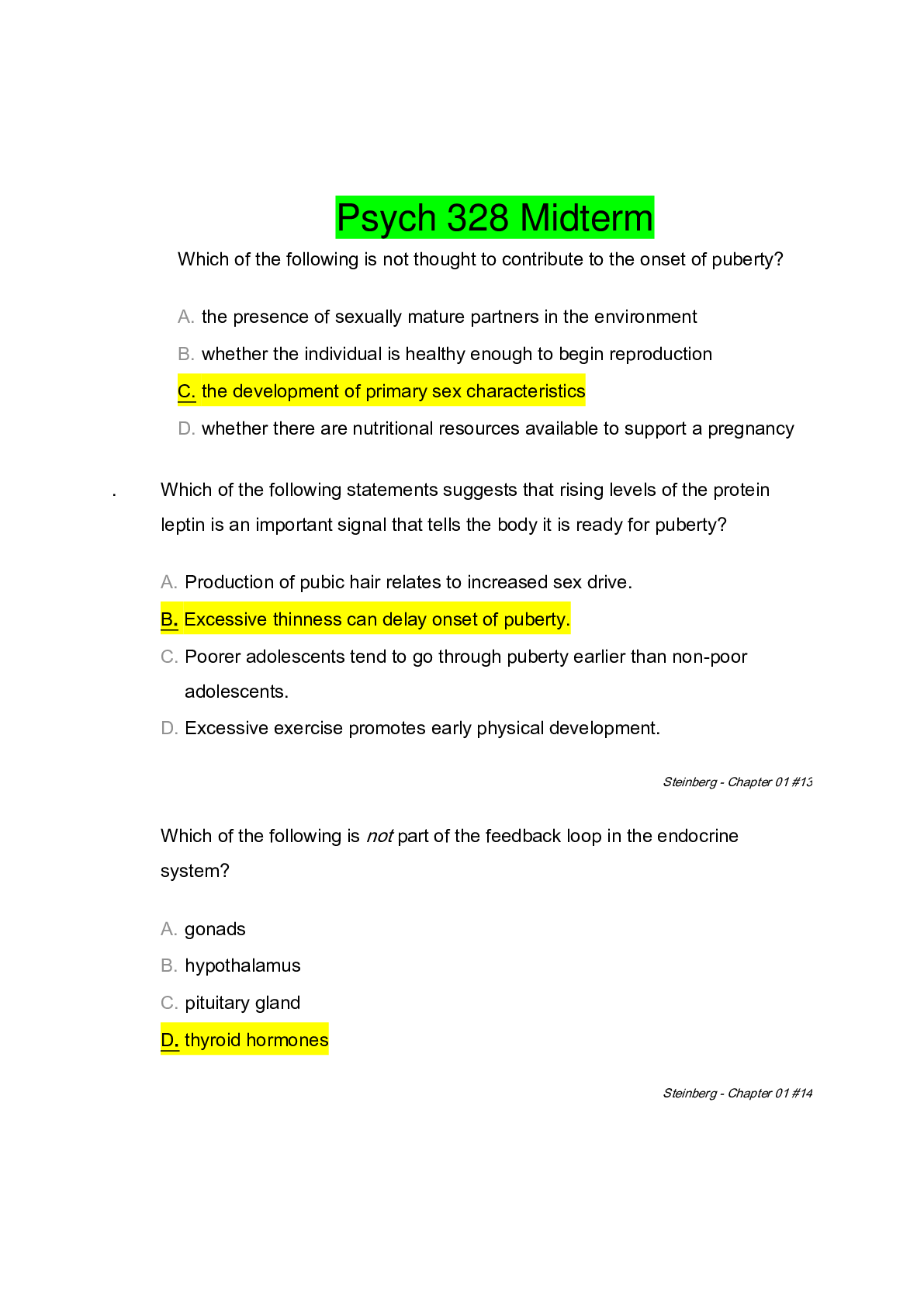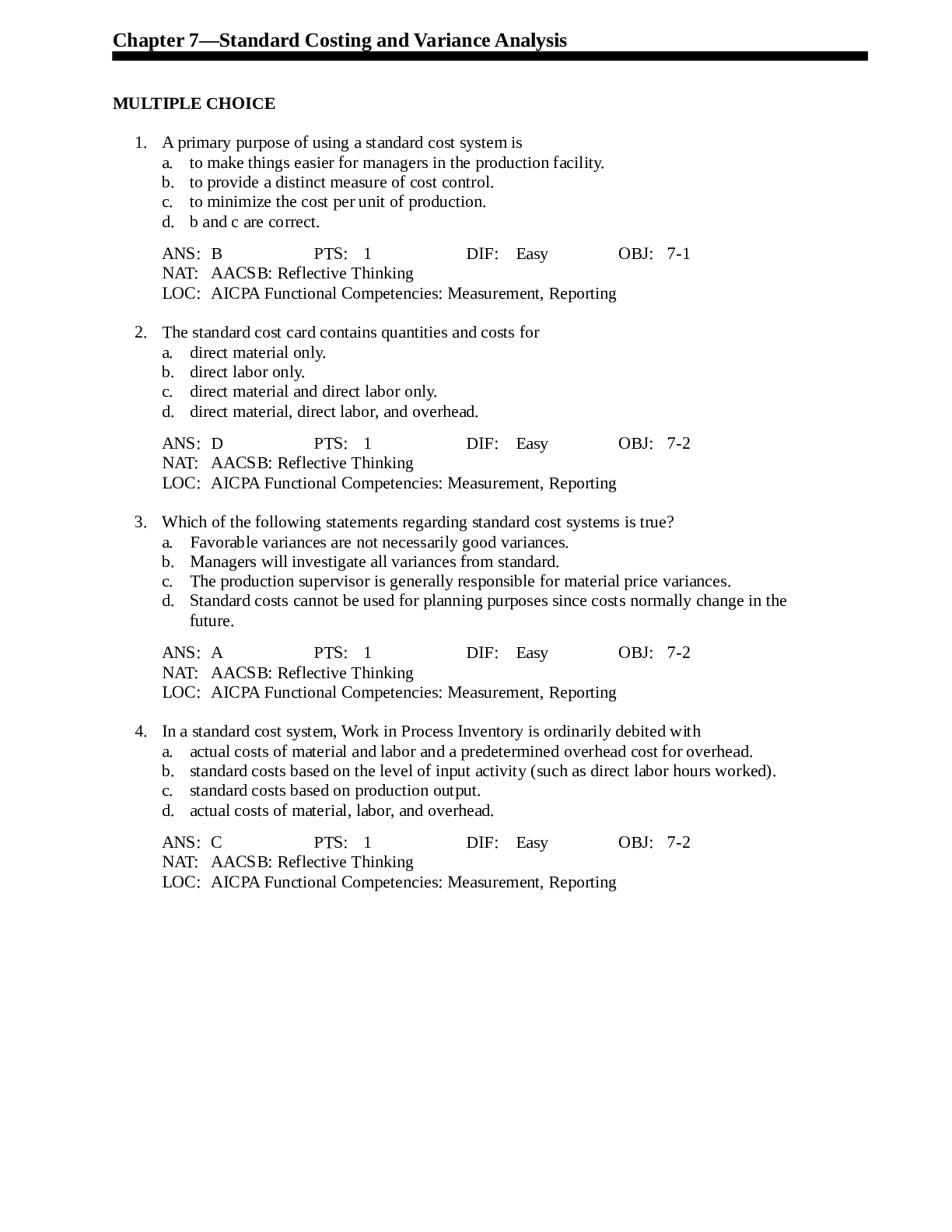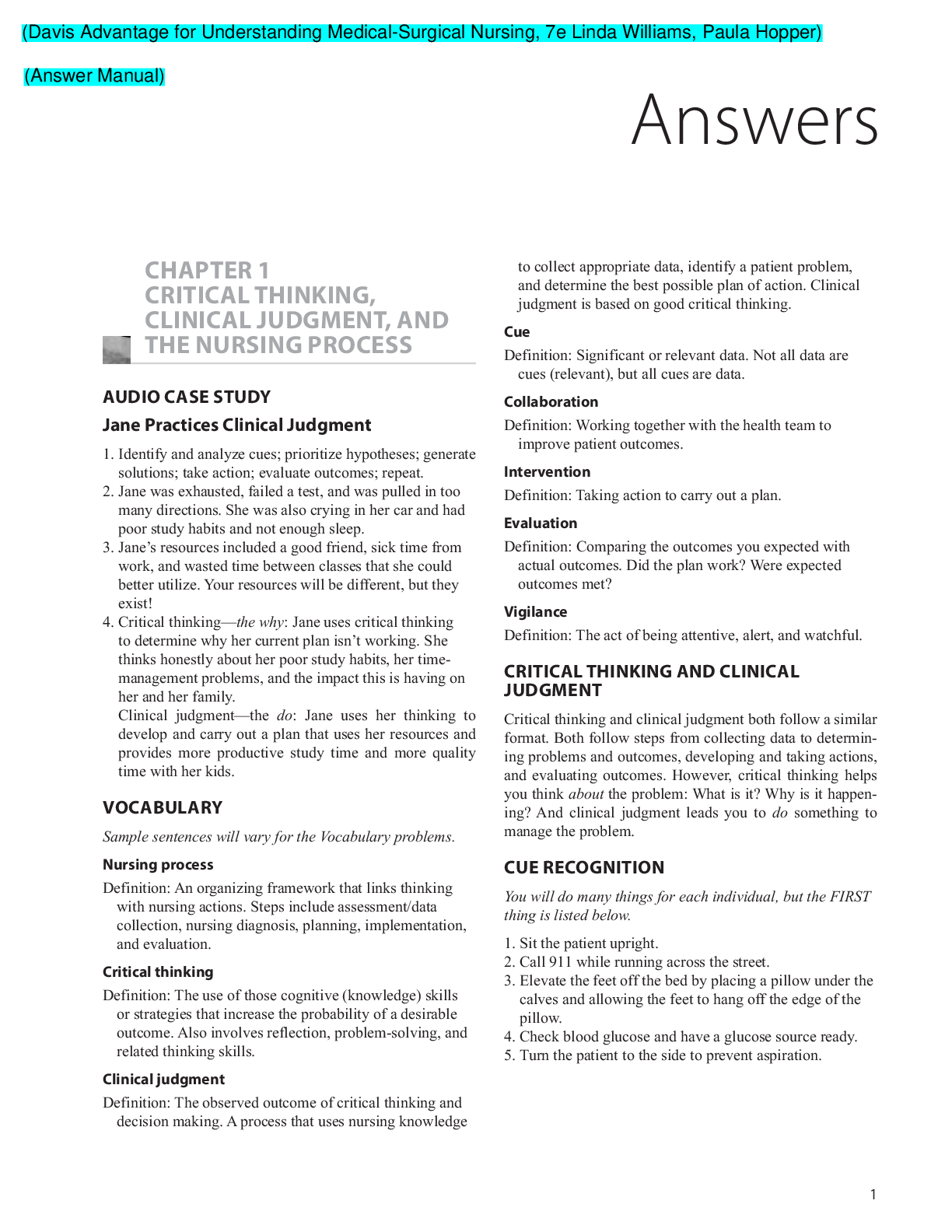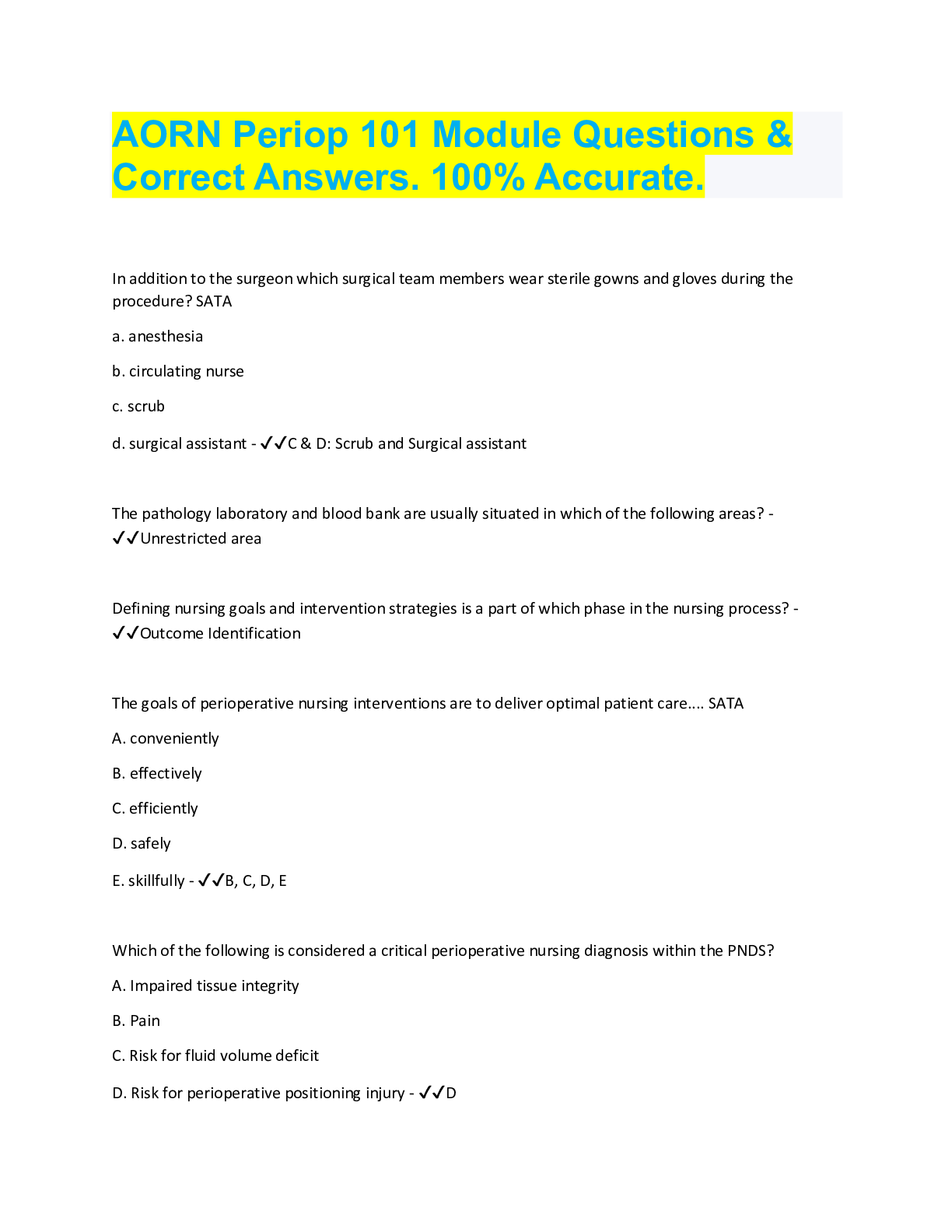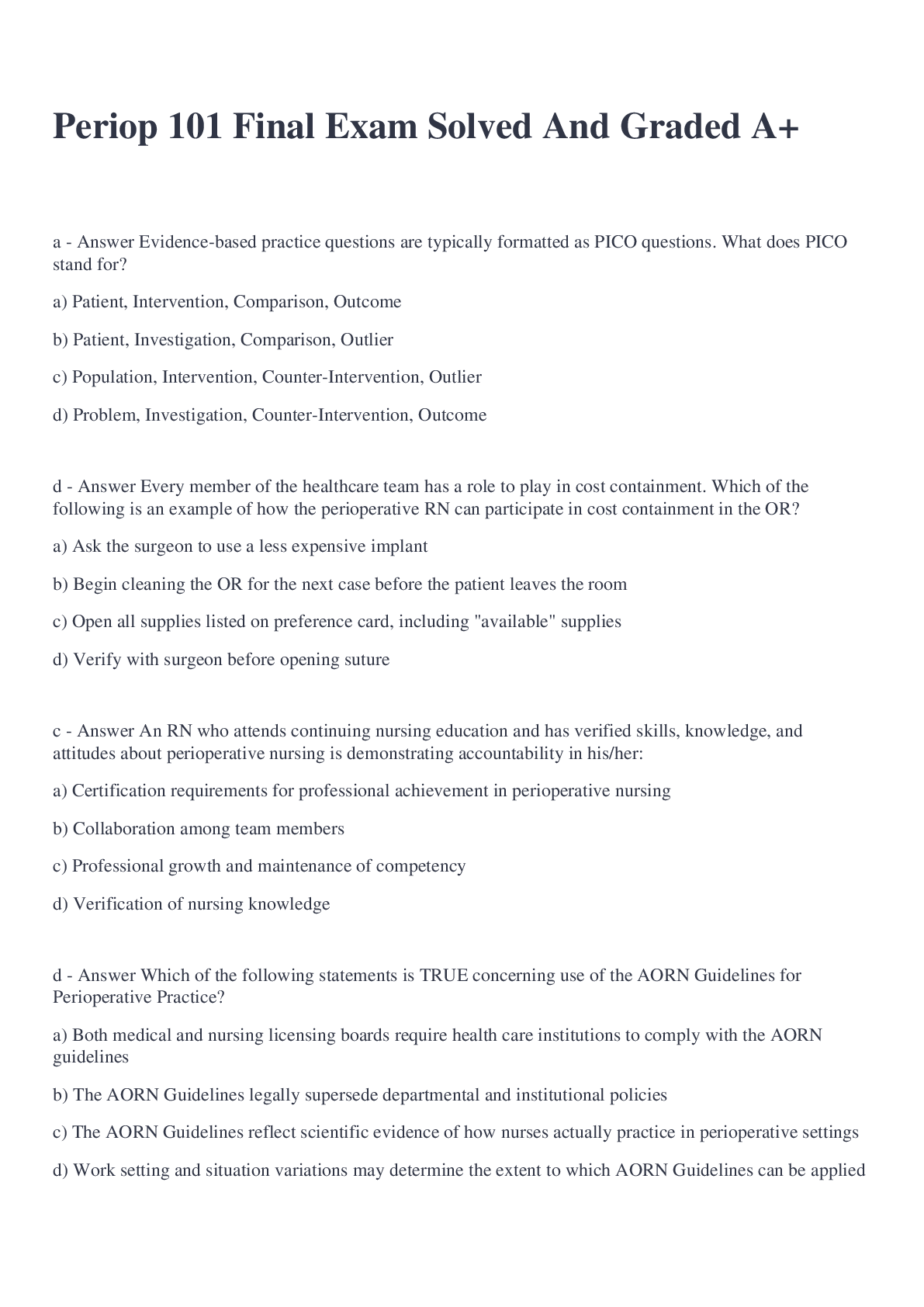*NURSING > QUESTIONS & ANSWERS > A&P – Chapter 7 MC Questions: Human anatomy and physiology: RASMUSSEN COLLEGE (GRADED A) (All)
A&P – Chapter 7 MC Questions: Human anatomy and physiology: RASMUSSEN COLLEGE (GRADED A)
Document Content and Description Below
A&P – Chapter 7 MC Questions 1) Which of the following bones is NOT part of the axial skeleton? a) Hyoid b) Ribs c) Vertebrae d) Carpals e) Sternum 2) Which of the following bones is part of... the axial skeleton? a) Tarsals b) Tibia c) Sphenoid d) Scapula e) Clavicle 3) Which of the following types of bone is the femur? a) Long bone b) Short bone c) Flat bone d) Irregular bone e) Sesamoid bone 4) Which following types of bone is the occipital bone? a) Long bone b) Short bone c) Flat bone d) Irregular bone e) Sesamoid bone 5) Which following types of bones comprise the ankles and wrists? a) Long bone b) Sutural bone c) Irregular bone d) Sesamoid bone e) Short bone 6) An opening or hole in a bone through which blood vessels, nerves and ligaments pass is called a a) fissure. b) foramen. c) fossa. d) meatus. e) sulcus. 7) In the diagram, which bone is the flat b a) A b) B c) C d) D e) E 8) How many named bones are found in the adult human skeleton? a) 200 b) 206 c) 212 d) 227 e) 250 9) In the diagram, which bone is the short bone? a) A b) B c) C d) D e) E 10) Which gender shows the coccyx pointed inferiorly? a) Females b) Males c) Both genders d) The coccyx does not point inferiorly in either gender 11) In the diagram, where is the ethmoid bone? a) A b) B c) C d) D e) E 12) Which of the vertebrae listed below would be the largest and strongest vertebra in adult humans? a) C5 b) L4 c) T4 d) C7 e) T12 13) In the diagram, where is the lacrimal bone? a) E b) F c) G d) H e) I 14) What bone marking found on the second cervical vertebra projects superiorly into the anterior portion of the vertebral foramen of the atlas? a) Primary projection b) Occular process c) Odontoid process d) Cervical projection e) Cervix 15) In the diagram, where is the zygomatic bone? G b) H c) I d) J e) None of these answer choices are correct. 16) The primary function of the transverse and spinal processes of vertebrae is a) attachment site for muscles. b) calcium storage. c) to support the body of the vertebrae. d) to hold the hyoid in place. e) to create a passageway for the spinal cord 17) In the diagram, where is the temporal bone? a) A b) B c) C d) G e) None of the selections are correct 18) The two primary curves of the adult vertebral column are the a) thoracic and sacral curves. b) lumbar and sacral curves. c) cervical and lumbar curves. d) cervical and thoracic curves. e) cervical and sacral curves. 19) In the diagram, where is the vomer? a) D b) E c) F d) I e) J 20) What is the purpose of the nucleus pulposus region of intervertebral discs? a) To compress the vertebral bones b) To help absorb vertical shock to the spinal column c) Calcium storage d) Spinal fluid reservoir e) Muscle attachment 21) In the diagram, which bone is considered the keystone of the cranial floor? a) E b) B c) G d) H e) I 22) Ribs that have costal cartilage that attaches directly to the sternum are called a) floating ribs. b) vertebrochondral ribs. c) false ribs. d) true ribs. e) separated ribs. 23) In the diagram, where is the ethmoid bone? a) J b) K c) G d) H e) I 24) Joe was found dead. His hyoid bone was broken. What was the most likely cause of death? a) Natural causes b) Cardiac arrest c) Gun shot d) Strangulation e) Choking 25) In the diagram, where is the mastoid process? a) J b) K c) G d) H e) I 26) The hyoid bone is suspended by ligaments and muscle that extend from the _______ of the temporal bone. a) mastoid process b) styloid process c) occipital condyle d) zygomatic process e) superior nuchal line 27) In the diagram, where is the palatine bone? a) A b) B c) C d) D e) E 28) Which bone of the axial skeleton does NOT articulate with any other bone? a) Vertebrae b) Ethmoid c) Sternum d) Hyoid e) Ilium 29) In the diagram, where is the nasal bone? a) A b) B c) C d) D e) E 30) This facial bone articulates with teeth. a) Lacrimal b) Palatine c) Vomer d) Maxillae e) Nasal 31) Where is the mandibular notch in the diagram? a) A b) B c) E d) F e) None of these answer choices are correct. 32) Where is the coronoid process in the diagram? a) A b) B c) E d) F e) None of these answer choices are correct. 33) This fontanel usually closes within 18 to 24 months after birth. a) A b) B c) C d) D e) Both A and C 34) A prominent ridge or elongated projection on a bone is called a a) crest. b) trochanter. c) sulcus. d) fossa. e) tubercle. 35) This is largest fontanel in size at birth. a) A b) B c) C d) D e) Both A and D 36) Where is the spinous process in the diagram? a) B b) C c) D d) E e) F 37) The tube-like passageway found in the temporal bone that allows sound waves to reach the eardrum is an example of which of the following bone surface markings? a) fissure. b) foramen. c) fossa. d) meatus. e) sulcus. 38) Which of the cervical vertebrae contain a unique process that is responsible for the ability to move your head from side to side signifying “no”? a) A b) B c) C d) D e) E 39) Which of the following is NOT a facial bone? a) Parietal b) Nasal c) Maxillae d) Zygomatic e) Palatine 40) Which of the cervical vertebrae are responsible for permitting the movement of the head seen when saying “yes”? a) A b) B c) C d) D e) E 41) Which of the following bones is NOT visible from the anterior view of the skull? a) Parietal b) Frontal c) Mandible d) Occipital e) Maxilla 42) Where is the vertebral body? a) C b) D c) H d) I e) J 43) These cranial bones contain the organs of hearing and balance, and articulate with the mandible. a) Frontal b) Temporal c) Parietal d) Occipital e) Nasal 44) Where is the clavicular notch? a) A b) C c) D d) B e) F 45) Which cranial bone is called the “keystone” of the cranial floor because it articulates with every other cranial bone? a) Occipital b) Frontal c) Ethmoid d) Nasal e) Sphenoid 46) Where is the sternal angle? a) A b) C c) D d) E e) F 47) This cranial bone is anterior to the sphenoid and posterior to the nasal bones. It contains foramina for the olfactory cranial nerve. a) Ethmoid b) Frontal c) Palatine d) Maxilla e) Temporal [Show More]
Last updated: 1 year ago
Preview 1 out of 22 pages
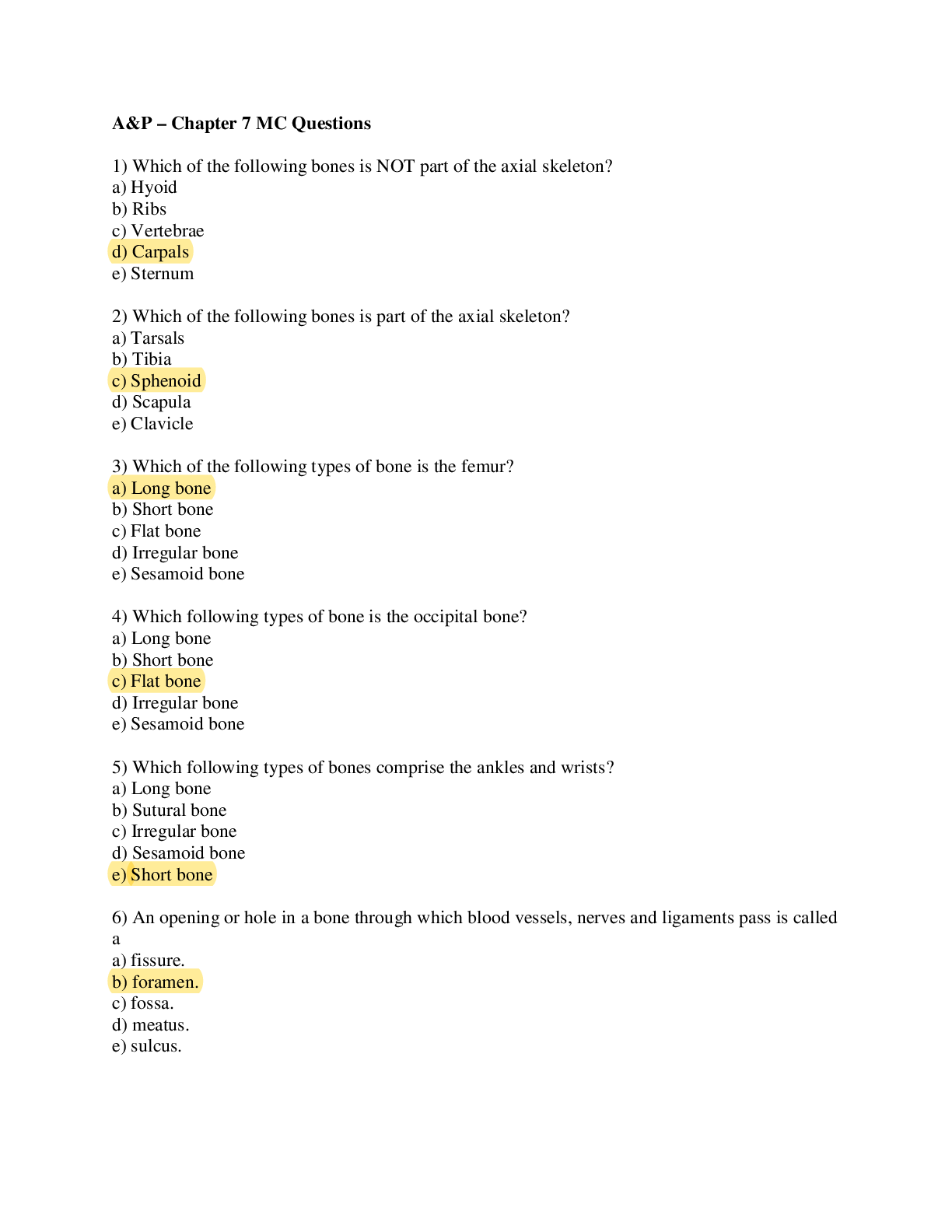
Reviews( 0 )
Document information
Connected school, study & course
About the document
Uploaded On
Apr 28, 2020
Number of pages
22
Written in
Additional information
This document has been written for:
Uploaded
Apr 28, 2020
Downloads
0
Views
101













